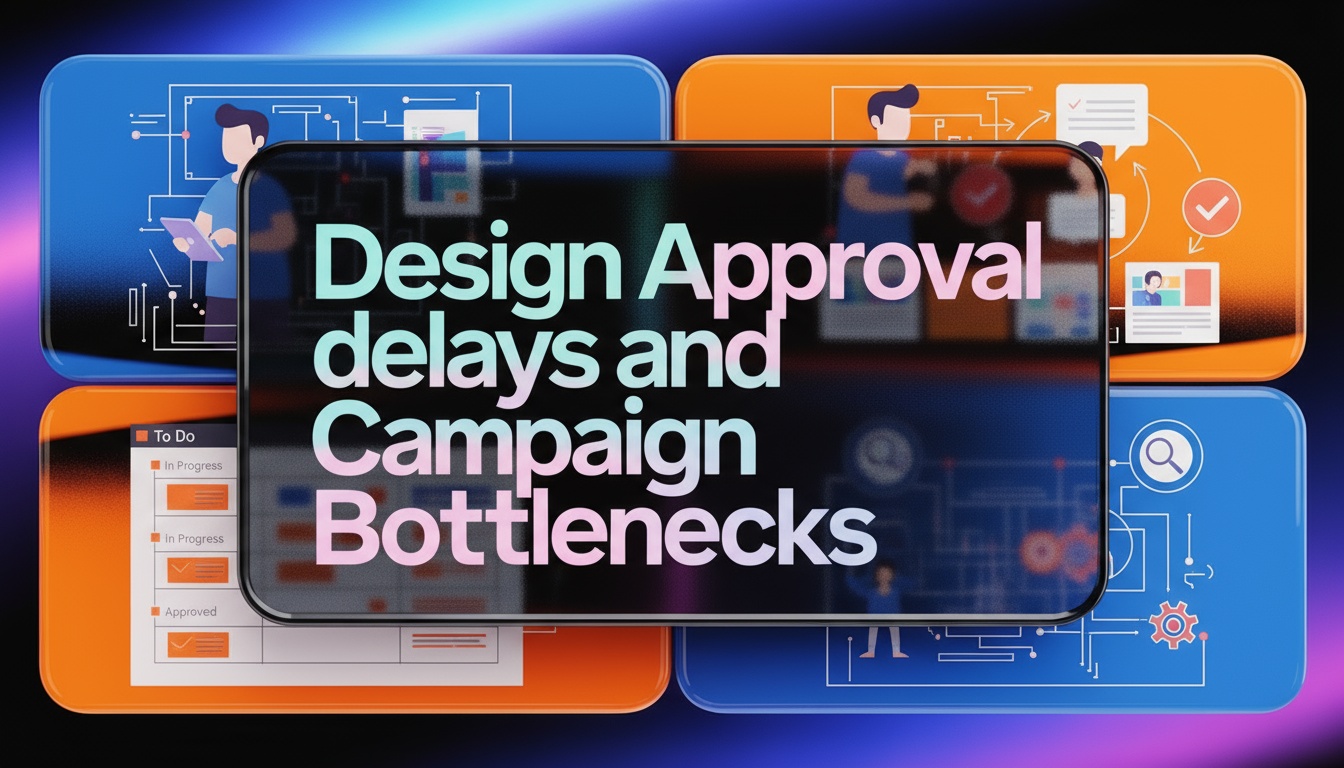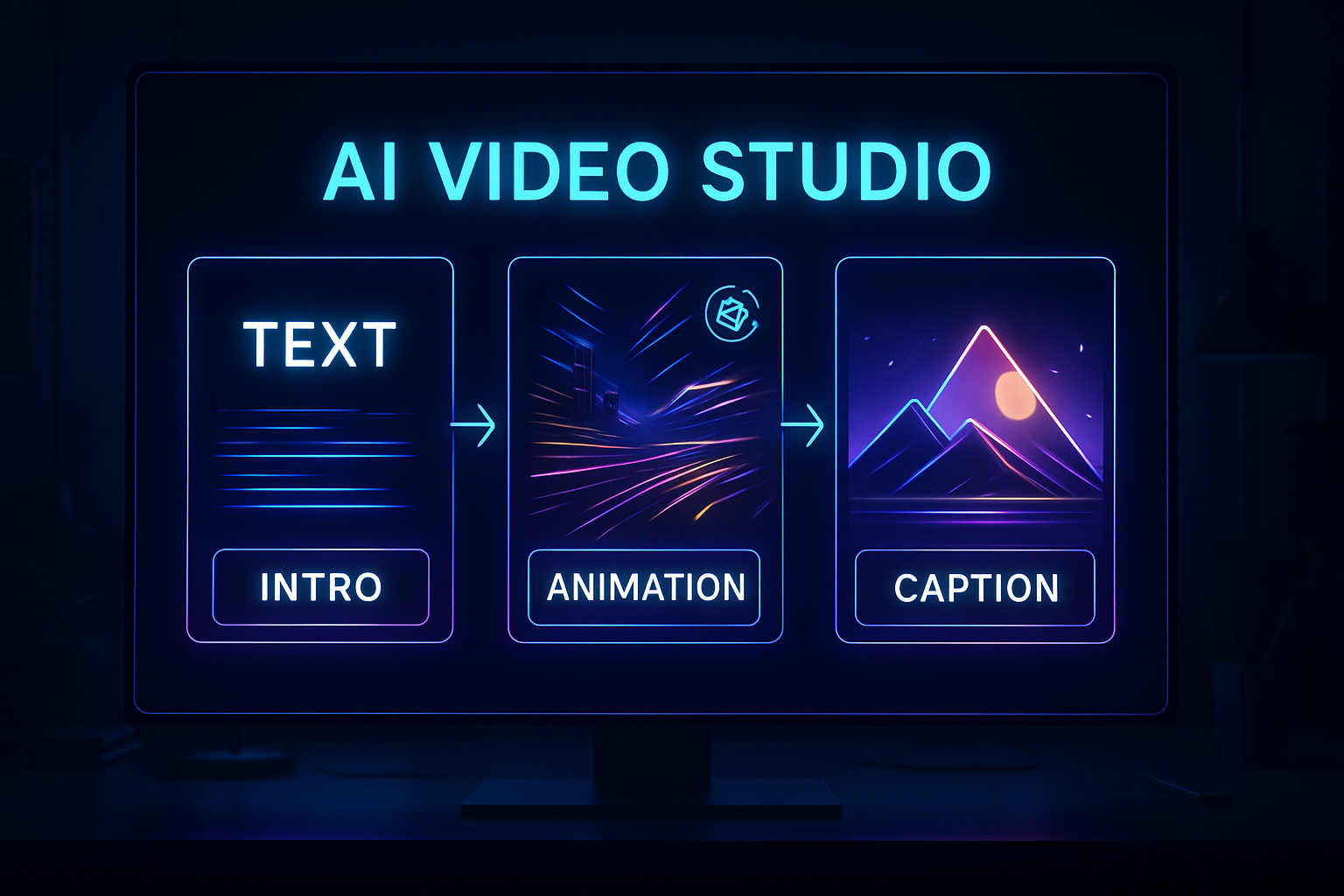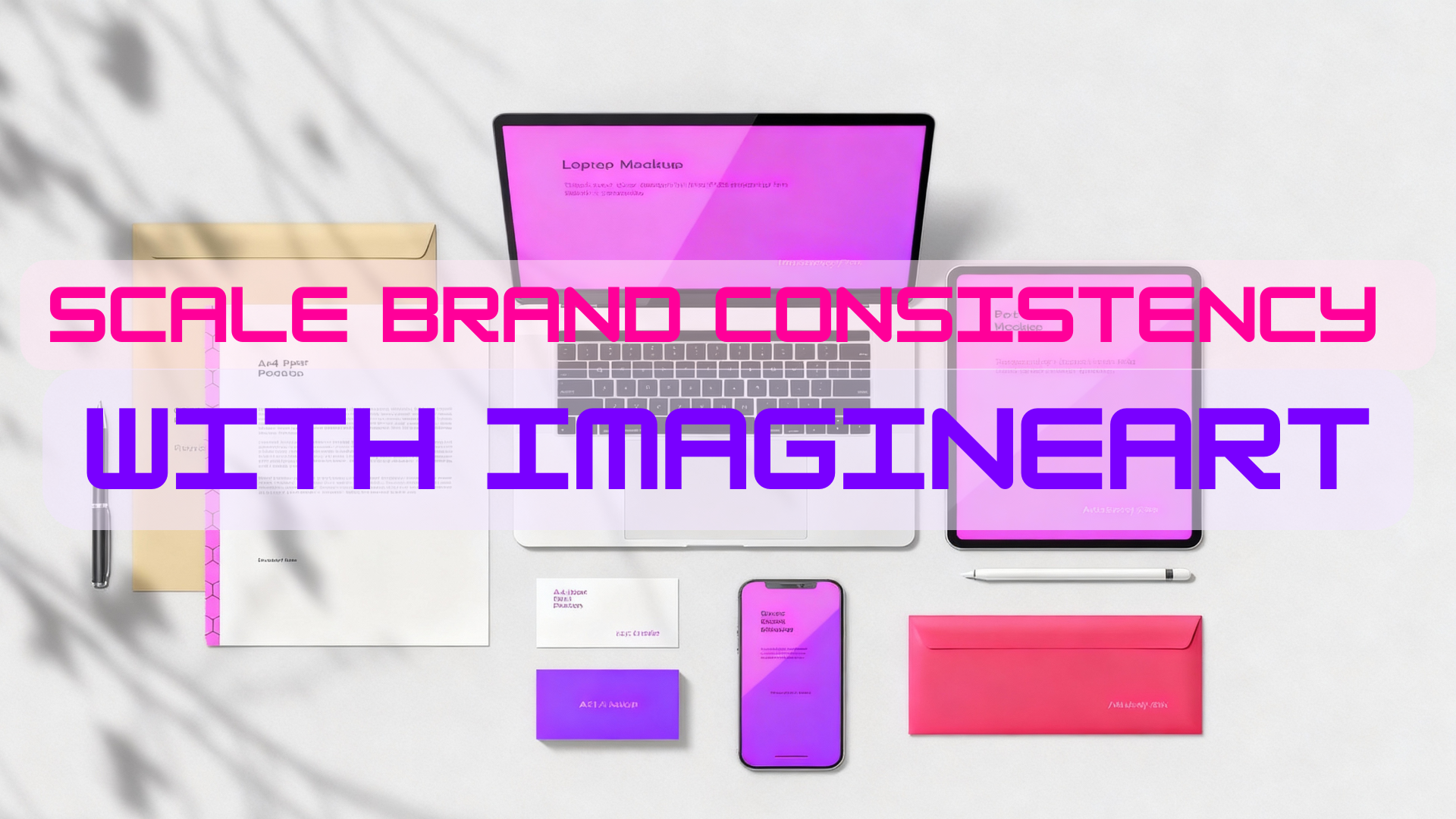

Faisal Saeed
Wed Oct 08 2025
7 mins Read
According to a recent study, 34% of graphic designers suggested that the artwork approval process included way too many steps, while 24% reported issues with the entire process.
The journey from concept to campaign launch is long and hard. While creative teams strive to produce compelling visuals, the path to approval can be riddled with delays and inefficiencies caused by miscommunication. These bottlenecks impede the timely campaign deliveries but also escalate costs.
While approval management softwares like Pageproof and Ziflow help, you need a platform that combine creative designing and approval in a single shared space.
In this blog, we'll delve into the common challenges associated with design approvals and perfect solutions for a streamlined process to enhance efficiency and collaboration.
The Impact of Design Approval Bottlenecks on Campaigns
Bottlenecks in design approval process can throw the entire workflow into disarray by affecting timelines, budgets, and overall effectiveness.
1. Delays in Time-to-Market
Every campaign’s success depends on a timely launch to benefit from relevant seasonal promotions and industry events. And that is what marketers base their entire time frame on. Delays in the design approval process can push these timelines, causing campaigns to miss critical windows.
A couple of such design approval bottlenecks and you are staring down the barrel of missed product launch opportunities, inability to capitalize on trending topics, seasonal events, and reduced relevance of the campaign content. These missed opportunities can lead to decreased revenue and diminished brand presence in the market.
2. Increased Costs
Nothing in marketing is free. Every single step that might seem insignificant is incurring cost. Even though companies invest in design and artwork approval softwares, they come in too late and rarely cater to changing client and stakeholder needs. In such an environment, there is next to no room for delays or errors. And extended approval cycles often mean extended project timelines, leading to extended costs.
Delays push back campaign launches, causing wasted advertising budgets and missed opportunities to capitalize on market trends. Teams may also have to reallocate resources to address the delays, diverting attention from other important tasks. These compounded costs can significantly eat into the campaign's return on investment.
3. Reduced Campaign Effectiveness
What content you utilize in your marketing campaigns depends on the viral trends at the time of the launch. So you need to be on time to benefit from the hype. A delay might miss the trend, which means your content is no longer relevant and needs to be either revamped or discarded.
This sets off a domino effect of problems, leading to lost momentum in campaign strategies and decreased audience engagement due to delayed messaging. All this builds up fatigue among the creative team and affects team productivity and enthusiasm due to burnout.
The need of the hour is to understand what causes these bottlenecks and not only find any approval management software, but find a product that can streamline and combine creative process with simultaneous feedback and inter-team collaboration.
The Common Challenges in the Design Approval Process & How ImagineArt Solves Them
1. Lack of Clear Communication
One of the most frequent pain points in the design approval process is misaligned expectations between creative teams and stakeholders. A designers often spend hours creating a design, but then the feedback comes. Maybe the stakeholder no longer wants what was discussed initially or maybe they do not like the design at all, in which case all that effort goes down the drain.
This miscommunication leads to unnecessary revisions, back-and-forth clarifications, and delayed approvals. Additionally, different team members or stakeholders may provide contradictory feedback, making it difficult to find a middle ground and keep the approval cycles in check.
This is where teams can benefit from a communication platform like ImagineArt for Teams, which provides a streamlined communication system, all housed within a single platform. With real-time feedback, comments, and approvals, team members and stakeholders can access the latest version of the design and leave their input without relying on endless email chains or disparate messaging platforms.
2. Slow Turnaround Time
Delays in feedback are often due to a dependency on key decision-makers who may not be available during crucial moments. Imagine a designer working on a product visual for days, and by the time they are finished, the product manager is not there.
This can create bottlenecks, as design teams have to wait for approval or feedback from a few individuals, often at the end of the workflow. Missed deadlines become common as these approval delays stretch the timeline, causing campaigns to launch late and miss critical market opportunities.
Generation Sync in ImagineArt Teams allows multiple team members to work on the same project simultaneously, making instant updates and revisions. The real-time collaboration feature speeds up the approval process, allowing for quicker feedback cycles. This reduces the waiting time for key decision-makers, ensuring that approvals and revisions can happen without unnecessary delays, which helps in accelerating turnaround times and meeting tight deadlines.
3. Multiple Iterations and Revisions
In design, there is no final version. Every stakeholder and team member who gets added to the project might have different preferences. So you need to iterate and make different versions in hopes for getting approval for one.
Stakeholders may request changes without providing clear direction, leading to multiple rounds of revisions. This back-and-forth not only extends approval timelines but can also dilute the original design concept, making it harder to maintain consistency across different versions.
Keeping track of all those iterations and revisions is another headache.
You can tackle this challenge with ImagineArt’s Team Plan, which offers version control and asset management features. Every iteration is carefully tracked, making it easy for teams to monitor progress and retrieve past versions of designs if needed. By using asset libraries, teams can keep designs consistent across revisions and focus on the most relevant version. This system reduces unnecessary revisions, ensuring a smoother approval process.
4. Fragmented Collaboration Tools
Often, teams use a mix of tools for feedback and revisions. Within each team exists a different channel or space for brainstorming, a different email chain for communication, Slack for team discussions, Google Docs for document editing, and design creation and approval software for the actual work.
This fragmentation means feedback is scattered across multiple platforms, making it difficult to consolidate and track. Important feedback may get lost or overlooked, and team members waste time switching between tools rather than working within one cohesive system.
ImagineArt for Teams consolidates all communication, feedback, and approval processes into one unified platform. With Team Spaces, all team members, stakeholders, and collaborators can work in a shared environment where everything is centralized. There’s no need to juggle multiple tools. All comments, feedback, and approvals are stored in one place, making it easier to track and adapt feedback in real time. This centralized approach boosts efficiency and ensures that no feedback slips through the cracks.
5. Approval Bottlenecks Due to Workflow Inefficiencies
As the saying goes, “Too many cooks spoil the broth.” Marketing teams do require a lot of people, but if their roles are ambiguous, things can get complicated, and inefficiencies can occur. In such a team, you have irrelevant people giving irrelevant feedback that can prolong the design process.
On top of that, a lack of a structured approval process and teams working in silos can further exacerbate the already inefficient workflow. With no clear guidelines on who should approve what or when, key stakeholders, whose feedback matters, may miss their chance, or approval may happen out of order, causing unnecessary delays.
ImagineArt for Teams offers a solution by defining clear roles and permissions within a project. The Team Subscription Plans and Custom Permissions ensure that the right people have access to the right stages of the approval process. Team leaders can control who can view, edit, and approve designs, making it clear who is responsible at each step. This structured workflow reduces the likelihood of bottlenecks and ensures that approvals are given promptly and in the right order.
You have tested the design approval softwares, now give ImagineArt a chance and see your workflow soar.
Let’s Recap
For Agencies
- Multiple clients with tight deadlines, causing revisions and feedback to pile up, leading to bottlenecks.
- ImagineArt streamlines collaboration by creating Team Spaces where creative teams and clients can interact directly on the platform.
- Stakeholders can view real-time progress, leave feedback, and approve designs in a single shared workspace.
- Version control and asset management maintain consistency across projects, speeding up delivery and reducing feedback loops.
For Corporates:
- Communication gaps and inefficient workflows between departments, slowing down campaign launches.
- ImagineArt provides a centralized platform for seamless internal collaboration, with real-time feedback and generation sync.
- Clear permissions and role-based access help streamline approvals and keep everyone aligned.
- Private and public spaces allow secure project handling, while custom subscription plans ensure smooth team management and better communication.
Final Thoughts
Efficient design approvals are key to successful campaigns. Delays can lead to missed deadlines, higher costs, and reduced impact. ImagineArt for Teams streamlines the approval cycle by enabling real-time collaboration, version control, and clear permissions. This helps teams meet deadlines, improve efficiency, and deliver high-quality campaigns faster, ensuring smoother workflows and enhanced campaign effectiveness.

Faisal Saeed
Faisal Saeed specializes in content writing and marketing for SaaS and GenAI businesses, driving conversion through comprehensive content that people love to engage with.







